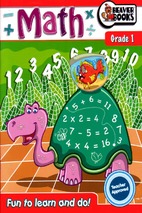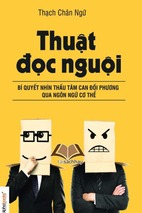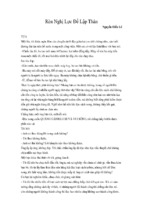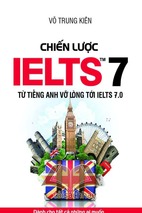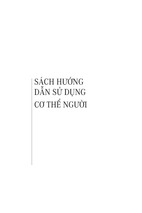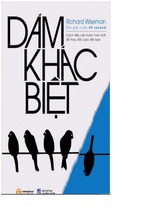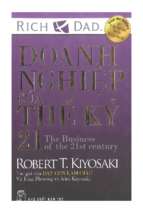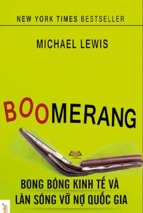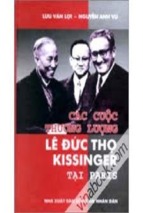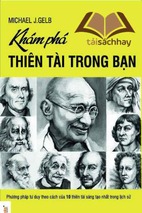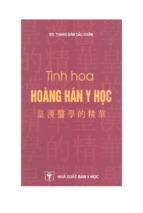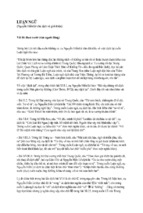A Brief Exposition on Bát Nhã Tâm Kinh
Bát Nhã Tâm Kinh is the apex of the Mahayana Buddhism thought (Phật giáo đại thừa).
Buddhism developed from Theravada (Phật giáo nguyên thủy, or tiểu thừa) to Mahayana (Đại
thừa). Thailand, Myanmar, Sri Lanka, Cambodia and Laos are essentially Theravada. Vietnam,
China, Japan, Korea, Hongkong, Singapore, Taiwan, Tibet and Mongolia are essentially
Mahayana. However, Theravada has also had its presence in Vietnam as early as Mahayana.
In this long development of Buddhism, the key concept of Không (Sũnya in Sanskrist,
“emptiness” or “void” in English) developed along. Life is non-permanent (vô thường) because
everything comes and goes, depending on nhân duyên (the law of causation). Life is therefore
illusory, not real. In other words, life is không or hư không.
This concept of Không may easily lead to the negative thought of nihilism. Mahayana Buddhism
takes us back out of this extremist concept of Không to the middle way (trung đạo). This middle
way still commits to the idea that “life is Không”; however không here is not different from có
(existence), “không mà là có, có mà là không” (emptiness is existence, existence is emptiness).
This middle way definitely takes away any inkling of nihilist negativism. It is realistic and
positive about life.
Bát Nhã Tâm Kinh presents this middle way while going swiftly through all teachings of the
Buddhist tradition, from Theravada to Mahayana. Studying Bát Nhã Tâm Kinh is really the
studying of the whole Buddhism.
Bát Nhã Tâm Kinh is so central to Phật giáo đại thừa (Mahayana) that it is recited daily (kinh
nhật tụng) by monks and nuns. In Vietnam, Bát Nhã Tâm Kinh is recited in hán việt (the
Vietnamese transliteration of Chinese language). The hán việt version has the advantage of being
a beautiful poem with good rhythm and sound and very concise language, therefore it is easy to
memorize. The problem is that it is still a foreign language to most Vietnamese. However, since
most Vietnamese Buddhist terms are hán việt anyway, it would be better for students of
Buddhism to be familiar with some hán việt. For these reasons, in this study, we will use the hán
việt version as the main version, along with the Vietnamese and English translations to facilitate
the understanding.
1
Bát Nhã Tâm Kinh
Prajñāpāramitā Hṛdaya Sūtra
Heart Sutra, Heart of Perfect Wisdom Sutra, Essence of Wisdom Sutra
Hán Việt
http://www.quangduc.com/kinhdien/kinhbatnha.html
Quán-tự-tại Bồ-tát, hành thâm Bát-nhã Ba-la-mật-đa thời chiếu kiến ngũ-uNn giai không, độ nhất
thiết khổ ách.
Xá-Lợi-Tử! Sắc bất dị không, không bất dị sắc; sắc tức thị không, không tức thị sắc; thọ, tưởng,
hành, thức, diệc phục như thị.
Xá-Lợi-Tử! Thị chư Pháp không tướng, bất sanh bất diệt, bất cấu bất tịnh, bất tăng bất giảm. Thị
cố không trung, vô sắc, vô thọ, tưởng, hành, thức; vô nhãn, nhĩ, tỷ, thiệt, thân, ý; vô sắc, thinh,
hương, vị, xúc, pháp; vô nhãn giới, nãi chí vô ý-thức-giới, vô vô-minh, diệc vô vô-minh tận, nãi
chí vô lão tử, diệc vô lão tử tận; vô khổ, tập, diệt, đạo; vô trí diệc vô đắc.
Dĩ vô sở đắc cố, Bồ-đề tát-đỏa y Bát-nhã-ba-la mật-đa cố tâm vô quái-ngại; vô quái-ngại cố vô
hữu khủng-bố; viễn ly điên-đảo mộng tưởng; cứu cánh Niết-bàn. Tam-thế chư Phật, y Bát-nhãba-la mật-đa cố đắc A-nậu-đa-la tam-miệu tam-bồ-đề.
Cố tri Bát-nhã Ba-la-mật-đa, thị đại-thần chú, thị đại minh chú, thị vô-thượng chú, thị vô đẳng
đẳng chú, năng trừ nhứt thiết khổ, chơn thiệt bất hư.
Cố thuyết Bát-nhã-ba-la-mật-đa chú, tức thuyết chú viết: Yết-đế Yết-đế, Ba-la yết-đế, Ba-la-tăng
yết-đế, Bồ-đề. Tát bà ha.
Dịch Nghĩa Tiếng Việt (TDH’s version, worked from other existing translations)
Khi Bồ tát Quán Tự Tại thực hành Bát-nhã ba-la-mật-đa sâu xa, soi thấy năm uNn đều không,
liền vượt qua mọi khổ ách.
Xá Lợi Tử! Sắc chẳng khác không, không chẳng khác sắc; sắc tức là không, không tức là sắc;
thọ, tưởng, hành, thức cũng lại như vậy.
2
Xá Lợi Tử! Mọi sự đều là không, chẳng sanh chẳng diệt, chẳng dơ chẳng sạch, chẳng thêm
chẳng bớt. Cho nên, trong không chẳng có sắc, chẳng có thọ, tưởng, hành, thức; chằng có mắt,
tai, mũi, lưỡi, thân, ý; chẳng có màu sắc, âm thanh, hương thơm, vị nếm, xúc cảm, và các pháp;
chẳng có nơi để nhìn, cho đến chẳng có có nơi để ý thức; chẳng có vô minh, cũng chẳng có chấm
dứt vô minh; cho đến chẳng có già chết, cũng chẳng có chấm dứt già chết; chẳng có khổ, nguyên
nhân khổ, sự diệt khổ, và con đường diệt khổ; chẳng có trí tuệ, cũng chẳng có đạt.
Bởi chẳng có gì để đạt, Bồ tát nương tựa Bát-nhã ba-la-mật-đa, nên tâm không vướng mắc; vì
không vướng mắc nên không sợ hãi, xa lìa mộng tưởng điên đảo, rốt ráo niết bàn. Chư Phật ba
đời nương tựa Bát-nhã ba-la-mật-đa nên đạt được vô thượng chánh đẳng chánh giác.
Nên biết Bát-nhã ba-la-mật-đa là thần chú lớn, là minh chú lớn, là chú tối cao, là chú không gì
sánh bằng, trừ hết mọi khổ ách, chắc thật, không dối.
Nên nói chú Bát-nhã ba-la-mật-đa, tức là nói chú rằng: Yết đế, Yết đế, Ba la Yết đế, Ba la tăng
Yết đế, Bồ đề, Tát bà ha. (Qua rồi, qua rồi, qua bờ rồi, qua bờ hết rồi, giác ngộ rồi, vậy đó!).
English translation
http://www.cttbusa.org/heartsutra/heartsutra.htm
The Heart of Prajna Paramita Sutra
(Translated by Tang Dharma Master of the Tripitaka Hsüan-Tsang
on imperial command).
When Avalokiteshvara Bodhisattva was practicing the profound prajna paramita, he illuminated
the five skandhas and saw that they are all empty, and he crossed beyond all suffering and
difficulty.
Shariputra, form does not differ from emptiness; emptiness does not differ from form. Form
itself is emptiness; emptiness itself is form. So, too, are feeling, cognition, formation, and
consciousness.
Shariputra, all dharmas are empty of characteristics. They are not produced. Not destroyed, not
defiled, not pure, and they neither increase nor diminish. Therefore, in emptiness there is no
form, feeling, cognition, formation, or consciousness; no eyes, ears, nose, tongue, body, or
mind; no sights, sounds, smells, tastes, objects of touch, or dharmas; no field of the eyes, up to
and including no field of mind-consciousness; and no ignorance or ending of ignorance, up to
and including no old age and death or ending of old age and death. There is no suffering, no
accumulating, no extinction, no way, and no understanding and no attaining.
3
Because nothing is attained, the Bodhisattva, through reliance on prajna paramita, is unimpeded
in his mind. Because there is no impediment, he is not afraid, and he leaves distorted dreamthinking far behind. Ultimately Nirvana!
All Buddhas of the three periods of time attain Anuttarasamyaksambodhi through reliance on
prajna paramita. Therefore, know that prajna paramita is a great spiritual mantra, a great bright
mantra, a supreme mantra, an unequalled mantra. It can remove all suffering; it is genuine and
not false. That is why the mantra of prajna paramita was spoken. Recite it like this:
Gate gate paragate parasamgate bodhi svaha!
Explanation
I.
The Title Bát Nhã Tâm Kinh
The full name of Bát Nhã Tâm Kinh is Bát-Nhã Ba-La-Mật-Đa Tâm-Kinh.
Bát Nhã is the transliteration of the Sanskrist term prajna. It means wisdom. In hán việt it is
called Tuệ or Huệ. However, this wisdom is more than the regular wisdom we encounter every
day. Our daily wisdom usually has “duality” in it—right wrong, black white, good bad, có
không, yêu ghét, existence nothingness, etc. In deep analysis, this duality wisdom is the source
of all troubles, because my right is your wrong and, therefore, conflict arises between us.
Duality wisdom makes our heart discriminate between this and that (tâm phân biệt), makes our
heart jumpy (tâm vọng động), leads us into conflicts and, therefore, makes us ignorant (si mê, vô
minh). In short, our everyday wisdom is not true wisdom yet.
The true wisdom surpasses such duality, surpassing right and wrong, surpassing existence and
nothingness, etc. It is the wisdom of a mother of 2 fighting children, each claiming that he is
right and the other is wrong. The mother sees neither right nor wrong, but only that both
children are ignorant in their fight.
To indicate this ultimate wisdom, the Buddhists see fit to keep the word “prajna” or its
transliteration “Bát Nhã,” instead of translating it into the word “wisdom”, “trí tuệ” or “trí huệ”.
Ba-La-Mật-Đa is the transliteration of the Sanskrist term “paramita” and means “crossing to the
other shore.” In hán việt, it is “độ” as in “phổ độ chúng sinh.” Crossing to the other shore also
means “giải thoát” (liberate) or “giác ngộ” (enlightened).
4
But, what shore and what river are we talking about? In Buddhism, we are on the shore of
suffering (khổ). By crossing the river of ignorance (vô minh), we get to the other shore, which is
the shore of enlightenment (giác ngộ).
Thus, Bát Nhã is the ultimate wisdom that carries us (độ) across the river of ignorance (vô minh)
to the shore of enlightenment (giác ngộ)
Tâm means the heart, the core, the essential.
Kinh means sutra, holy writing.
Thus Bát Nhã Tâm Kinh is an essential holy writing about the ultimate wisdom that carries us
(độ) across the river of ignorance (vô minh) to the shore of enlightenment (giác ngộ).
(However, please note, when we talk about crossing from the shore of suffering to the shore of
enlightenment, we are talking about duality—two opposite shores—which we have said is not
really wisdom. Bát Nhã accepts no duality. As we will see later, in Bát Nhã, when we reach the
other shore, we see that the true nature of all things is không, and in không there was/is/will be
no river to cross. All the crossing is just a fleeting phenomenon of the mind).
II.
The Essence of Wisdom (The first 2 verses)
The first 2 verses are the essence of Bát Nhã. All other following verses are further expansion of
this essence. These are the first 2 verses:
Hán việt
Quán-tự-tại Bồ-tát, hành thâm Bát-nhã Ba-la-mật-đa thời chiếu kiến ngũ-uNn giai không, độ nhất
thiết khổ ách.
Xá-Lợi-Tử! Sắc bất dị không, không bất dị sắc; sắc tức thị không, không tức thị sắc; thọ, tưởng,
hành, thức, diệc phục như thị.
Tiếng Việt
Khi Bồ tát Quán tự tại thực hành Bát-nhã Ba-la-mật-đa sâu xa, soi thấy năm uNn đều không, liền
vượt qua mọi khổ ách.
Xá Lợi Tử! Sắc chẳng khác không, không chẳng khác sắc; sắc tức là không, không tức là sắc;
thọ, tưởng, hành, thức cũng lại như vậy.
5
English
When Avalokiteshvara Bodhisattva was practicing the profound prajna paramita, he illuminated
the five skandhas and saw that they are all empty, and he crossed beyond all suffering and
difficulty.
Shariputra, form does not differ from emptiness; emptiness does not differ from form. Form
itself is emptiness; emptiness itself is form. So, too, are feeling, cognition, formation, and
consciousness.
Bồ tát is the short form of bồ đề tát đỏa, which is the transliteration of the Sanskrist term
“Bodhisattva.” It is a word in Mahayana Buddhism (phật giáo đại thừa). Bodhi (bồ đề) means
giác ngộ, enlightened. Bodhisattva means “enlightened being.” In the Mahayana tradition, bồ
tát is a person who has reached enlightenment (giác ngộ) but postpones final attainment of full
Buddhahood in order to help other people reach enlightenment. Bồ tát is one step lower than a
full Buddha, so to speak.
Tu bồ-tát thừa (training in the bodhisattva way) is the Mahayana way to reach enlightenment.
This way is called lục độ ba-la-mật (six paths to cross to the other shore). They are: Bố thí
(giving), trì giới (keeping rules and precepts), nhẫn nhục (patient and humble), tinh tấn
(advancing in the practice), thiền định (mediation) and trí huệ (wisdom). At the start of the
training, the first thing a trainee of must do is phát tâm bồ-đề (start bodhicitta, start bodhisattva’s
heart)—a commitment to achieve enlightenment in order to help other beings achieve
enlightenment too. This is a very selfless vow. (Please see the Bodhisattva way at
http://www.buddhismtoday.com/viet/phatphap/lucdobalamat.htm).
Đại thừa (Mahayana) has Bồ tát (Boddhisattva) as an enlightened person.
Phật giáo nguyên thủy (Theravada) has two types of enlightened persons: (1) Bích Chi Phật
(pratyekabuddha) is a person who reaches enlightenment through practicing Thập Nhị Nhân
Duyên (the twelve links of cause and effect). This training way is called Duyên Giác
(enlightenment through the law of causation). (2) A-la-hán (arhat) is a person who reaches
enlightenment from practicing Tứ Diệu Đế and Bát Chánh Đạo (The Four Noble Truths and The
Noble Eightfold Path). This training way is called Thanh Văn (sound and speech, of the
Buddha). We will explore these different training ways later.
The fullest level of enlightenment is Buddha (Phật). There are many (full) Buddhas in the
sutras, but there is only one historical (full) Buddha in the history of the world--that is Buddha
Sakyamuni (Thích Ca Mâu Ni, the sage of the Sakyas family), the founder of Buddhism.
Thus, we have 4 types of enlightened persons, ranked from top down: Phật, bồ tát, bích chi phật,
a-la-hán (buddha, bodhisattva, pratyekabuddha, arhat).
6
Quán Tự Tại is the name of the Bồ tát. In most Buddhist sutras, a Bồ tát’s name is both a
proper noun (his own name) and a common noun (a generic term standing for something). The
Sanskrist name is Avalokiteshvara, which is translated in this sutra as Quán Tự Tại—observing
existence itself, observing existence as it is. In other sutras, Avalokiteshvara is translated as Quán Thế
Âm—observing/ listening to the sounds of the world. One Sanskrist name with two slightly different
translations: When we focus on philosophy, it is Quán Tự Tại; when we focus on compassion, it is Quán
Thế Âm, listening to the voices of suffering people of the world.
Bồ tát Quán Tự Tại , in addition to being a proper name, also indicates any of us who is enlightened
enough to be able to observe existence (our self and the world around us) as it is, without distortion,
confusion, or ignorance.
Ngũ u�n is five skandhas in Sanskrist, or five aggregates in English. The five skandhas are form
(sắc), feeling (thọ), perception (tưởng), mental formation (hành) and consciousness (thức).
Together these five skandhas make up our being. Sắc (color or form) indicates the physical part
of our being. Thọ tưởng hành thức(feeling, perception, mental formation, consciousness) make
up the mental part. Thus, the term ngũ uNn indicates human being, human existence.
The first verse of Bát Nhã Tâm Kinh, therefore, means “When the enlightened person who
observes existence as it is practices the profound prajna wisdom, he sees that his being is không
(emptiness, sũnya), then he crosses beyond all suffering.”
Here is the first important step into Buddhism. Non-Buddhists generally think that we exist, and
our existence is solid, real, and permanent. This attitude is called “chấp có” (attaching
to/grasping onto existence).
Buddhism says our existence is not real--it is fleeting, impermanent; our being is illusory, it is
không, it is emptiness.
This was the earliest meaning of không in the long development of the Buddhist thought. At that
time, không was still limited to human life. Many Buddhists schools of the pre-Bát-Nhã time
maintained that our being is không but the world around us does exist.
A characteristic of không at that time was that không was understood as the opposite of có
(existence, form), so không could easily be understood with the extreme meaning of nihilism.
This nihilist extremist attitude is called “chấp không” (attaching to/grasping onto emptiness).
As we will see in the next verses, Bát Nhã (1) expands the concept of không from human to the
entire universe, and (2) at the same time, pulls không back from the nihilist extreme to the
middle way (trung đạo)--không mà có, có mà không-- and makes không more realistic and
more positive to living.
Xá Lợi Tử means Son of the Sari family. This is the name of Buddha Sakyamuni’s most
intelligent disciple. Please note, in Bát Nhã Tâm Kinh, Xá Lợi Tử was addressed by name twice.
Each time signifies a major development in the meaning of không in the history of Buddhism.
7
This first time is to take không from the nihilist opposite of có to the middle way, as the
following phrase shows.
Sắc bất dị không, không bất dị sắc. Sắc is not different from không, không is not different
from sắc.
Sắc (color, form) is one of ngũ uNn (five skandhas, five aggregates) that make up our being. Sắc
indicates the physical part of human.
Sắc is also one of six dusts (lục trần: sắc thanh hương vị xúc pháp –color, sound, fragrance, taste,
objects of touch, dharma) that make up the universe.
Thus the term sắc in the above phrase serves two major functions. First, it is used as an antonym
of không. Second, it is a subtle link to make a subtle announcement of the upcoming expansion
of không from human to the entire universe.
While không is now quietly planning to expand its “territory” from human to the entire universe,
không is also pulling its meaning back from the nihilist extreme to the middle way (trung đạo).
Recall that, in the first verse, our being is không (ngũ uNn giai không). However, this second
verse shows that không surely doesn’t mean “nothing” or “non-existence.” In this second verse,
không is not different from sắc, not different from colors and forms that we can see with our
eyes. And sắc is not different from không.
In other words, không and sắc, the two seemingly opposite concepts, are really one and the same.
The repetition, sắc bất dị không, không bất dị sắc, is a logical formula to confirm, in a negation
mode of speaking, that sắc and không are the same.
Then the next verse, sắc tức thị không, không tức thị sắc (sắc tức là không, không tức là sắc),
is another logical formula to confirm again, now in the affirmation mode of speaking, that sắc
and không are the same.
Both the affirmation and negation modes of speaking aim to emphasize one central truth: Sắc
and không are the same, existence and emptiness are the same, có and không are the same.
Not only sắc, which stands for our physical body, but the mental elements of our being also
operate the same way—they and không are the same; they are không and không is them. That is
the meaning of the next phrase of Bát Nhã Tâm Kinh: thọ, tưởng, hành, thức, diệc phục như
thị (feeling, perception, mental formation, and consciousness are also like that).
In sum, at this point in the development of the Buddhist thought we have: Our being is không,
but không doesn’t mean nihilism, không is the same as sắc or whatever makes up our being.
8
But why sắc and không are the same? Why apparently opposite things are the same?
Here we need to go into the “Three Dharma Seals” (Tam Pháp Ấn) to find the answer.
Dharma (pháp) is a rather confusing term in Buddhism, because, depending on the context of
speaking, it has several different meanings. Here we will limit ourselves to 2 different meanings
only. First, pháp means anything in the physical and mental universe, like a tree, a table, a
feeling, a thought. Second, pháp also means a Buddhist teaching, a method of practicing
Buddhism.
Tam Pháp Ấn (Three Dharma Seals) are three seals to prove that a teaching is true Buddhist
teaching: 1. vô thường (non-permanence), 2. vô ngã (non-self), 3. niết bàn (nirvana). If a
teaching misses one of these three seals, it is not Buddhist teaching.
a.
Vô thường (anitya in Sanskrist) means non-permanent, ever-changing. Everything
comes and goes, depending on causes and conditions. A tree comes to existence when the cause
(the seed) and conditions (weather, water, soil, etc.) are ripe for the seed to grow. Like anything
else in the universe, the tree goes through 4 stages: thành trụ hoại không (appearing, steadying,
decaying, disappearing). When causes and conditions become ripe for disappearing, the tree will
disappear. This is luật nhân quả or nhân quyên (law of causation)—nhân means cause, duyên
means condition. Everything is vô thường (non-permanent), because everything comes, changes
and goes depending on ever-changing causes and conditions.
b.
Vô ngã (non-self). Because everything is vô thường, none has a permanent existence,
none has a permanent self. “The me” today is just the me today. Before I was born, there was no
me. Right now, I am ever changing, ever getting older. Eventually I will die off, and after that
there is no me. My self is not permanent. I have no permanent self. I have non-self. Non-self
does not mean no self; non-self means no permanent self.
A natural question arises here: After I die off and my self dissolves, is that the total end of me?
Yes and no. Yes, the me is ended, but how about the elements that made up me? I was formed
by many elements in the universe—water, minerals, chemicals, electrons, electromagnetic, etc.
When “the me” dissolves, I disappear, but the elements that made up me are still there in the
universe; they just move around and, depending on causes and conditions, make up something
else. In short, after death, my “self” is no longer here, but the elements that made me are still
there in the universe. So, we say philosophically, “From the universe I come, and back to the
universe I go.”
But what is the universe? The universe is a big expanse, a borderless, unlimited, never-ending
space—a big không. So, if we replace the word “universe” with the word “không,” then our
philosophical statement now reads: “From không I come, and back to không I go.”
And that is why we can say in Bát Nhã language “I am không, không is me.” I am a fleeting
manifestation of the big không universe. This is the meaning of non-self in Bát Nhã language.
9
And this is also the basis of “sắc tức thị không, không tức thị sắc.” (Form is emptiness,
emptiness is form).
(Note: The universe is good example to explain Không, but the universe is not really không yet.
We will talk more about this in the next section).
At this point we have answered our question “why sắc and không are the same?” However, let’s
go an extra step to finish the third dharma seal, nirvana.
c.
Niết Bàn (Nirvana)
If we do not understand vô thường and vô ngã and we grasp onto the idea of a permanent life and
a permanent self, we suffer when changes come, just like a person suffers when his beloved
changes her heart or passes away.
The mental act of “grasping” onto something or some idea is called “attachment” or “chấp.”
Attachment to anything or any idea will bring suffering. For example, grasping on the idea that
life is miserable makes us suffer from negativism. Grasping on the idea that life is all good
makes us suffer from naïveté. Grasping on the idea that “she is my life” makes us suffer when
she leaves.
To relieve ourselves from suffering, we practice non-attachment (vô chấp). When we are no
longer attached to anything, there is nothing to make our mind jumpy or stressed. No more
suffering. The mind is calm and cool like a stove with the fire already extinguished. We have
reached nirvana. Nirvana means “the fire is out.”
In short, vô chấp is the way to reach enlightenment, to reach nirvana.
However, why when Bồ tát Quán Tự Tại sees that ngũ u�n are không, he crosses beyond all
suffering?
Because when he sees that his being is không he no longer has any attachment. In life, we can
grasp onto to millions of things around us—wealth, beauty, love, power, ideology. But in the
final analysis, the reason we grasp onto anything is because of our self. Because we grasp onto
our self, we want everything for our self. If we do not grasp onto our self--because we realize
that the self is fleeting, is không--we will automatically drop all attachments to everything, then
we cross beyond all suffering, we reach nirvana.
Thus, understanding không leads to vô chấp, which leads to nirvana.
10
Does this sắc-không philosophy have anything to do with my life?
Yes, this sắc-không philosophy has many fundamental implications on how we should conduct
our life.
1.
Affirmation of life: The constant negation language of Bát Nhã--with void, emptiness,
not, and no--gives many people the misconception that Bát Nhã denies everything. But a careful
reading reveals that Bát Nhã doesn’t deny anything. Indeed, Bát Nhã confirms everything in life.
“Sắc is not different from không, không is not different from sắc. Sắc is không, không is sắc.”
How could this statement mean a denial of anything? It is a clear and emphatic affirmation of
both sắc and không, the two apprarent extremities of life. Thus, Bát Nhã emphatically affirms
life with all life aspects.
2.
A relaxed and free attitude about life: Bát Nhã keeps us away from attachment. We do
not grasp onto sắc to deny không, because không is sắc. We do not grasp onto the không to deny
sắc, because sắc is không. Since Bát Nhã means non-attaching to either sắc or không, we call
the Bát Nhã way “trung đạo” (middle way).
But the Bát Nhã middle way doesn’t mean we grasp onto to the middle position on the road. All
attachments, including attachment to the middle, are suffering. Non-attachment (vô chấp) means
not attaching to anything, any idea, any position. So, in Bát Nhã, we affirm everything while
not grasping onto anything. That is the meaning of “middle way.”
Therefore, we can be selling without attaching to money, reading without attaching to the book,
eating without attaching to food, driving without attaching to the car, doing politics without
attaching to power.
In Kinh Kim Cang (The Diamond Sutra), in order to achieve a pure and tranquil heart, Bồ tát
should “ưng vô sở trụ” (không có chổ trụ; fixed on no place) (Kinh Kim Cang, Section 10). Bồ
tát can stand on any place as he wishes, as long as he is not fixed to that place. The bird has to
stand on something once in a while; however, because the bird is not fixed on any place
permanently, she is free--the entire sky is her domain. A bird that stands fixed on a place is a
dead bird.
The reality of life is that we make living choices every day. We constantly make life decisions,
constantly take a stand on some ground. However, we should not be attached to any choice we
have made, lest we become the prisoner of our own choices. We should be ready to leave any
selected choice when necessary. Ưng vô sở trụ. Not fixed on any place. Then our heart is
tranquil and free; we are liberated; we are free.
11
3.
Bát Nhã’s middle way differs from indifference or non-commitment. Indifferent and
non-committal people don’t care about anything, are wishy-washy on all things, and never stand
up for anything.
Bát Nhã’s people care about life. They often take a stand for goodness; however, they are not so
attached to their idea of goodness to the degree that they try to eliminate all people with a
different stand.
4.
Bát Nhã helps us lead an active and selfless life: In Kinh Kim Cang (the Diamond Sutra),
Bát Nhã is the key to living an active and selfless life. There the Buddha said in essence, “I
have helped liberate immeasurable, countless, infinite number of sentient beings, for them to
enter nirvana, but indeed no beings have been liberated. Why? Because, if Bodhisattva still sees
me, others, sentient beings, instruction recipients, then that is not Bodhisattva.” (Kinh Kim
Cang, section 3, paraphrased by TDH).
Putting aside all abstract philosophical meanings, the above quote means one simple thing—Bồ
tát doesn’t see the difference between himself and others. Why? Because Bồ tát doesn’t grasp
onto “me” and “others” as separate and different entities. I am not different from others, others
are not different from me. Sắc bất dị không, không bất dị sắc; sắc tức thị không, không tức thị
sắc. I am others, others are me. So when Bồ tát helps others, he doesn’t see that he helps others,
he feels like he helps himself. Helping others is just as natural as helping himself.
Bát Nhã Tâm Kinh and Kinh Kim Cang are two very significant Mahayana sutras. They go
together well as a pair—Bát Nhã Tâm Kinh is abstract philosophy, Kinh Kim Cang is living
practice. Reading the two sutras together helps the understanding of each greatly.
(For an exposition on Kinh Kim Cang by HT Thích Thanh Từ, please see
http://buddhismtoday.com/viet/kinh/dt/044-thichthanhtu-kinhkimcang.htm ).
Is the Buddhist trung đạo different from the Confucian trung dung?
Both trung đạo and trung dung may be translated as middle way, but they are really different. In
Confucianism, trung dung is a way of living with moderation and harmony—moderate in all
things, including the application of rules of conduct (nhân lễ nghĩa trí tín; humanity, respect,
loyalty, wisdom, honesty)--to generate harmony with other people and with trời đất (heaven and
earth). Generally speaking, standing in the middle is the favorite position of Trung Dung.
The Buddhist trung đạo means not-attached (vô chấp) to anything, including the middle of the
road. The Bát Nhã practitioner can stand on any ground, any place, the middle, the left, the right,
the high, the low. It doesn’t matter where. As long as his mind/heart (tâm) is not attached to his
standing position or to anything else, then his position is good. In Bát Nhã, a pure and tranquil
12
heart (tâm thanh tịnh, i.e., non-attaching heart, tâm vô chấp) is what that counts, not the position
on the road.
In Zen literature (văn học Thiền), many Zen masters did things that looked very extreme. A
master chopped a wooden Buddha statue to make a fire to warm himself and his student in a very
cold night when there was no wood. Another master answered his student’s question by giving
the student a hard slap on the face. Apparently these were very extreme actions, but the
Buddhist masters did them, because they knew, in the circumstances at the time, doing so would
help their student attain enlightenment, and because their mind was not attached (vô chấp) to the
idea that the Buddha statue was untouchable or that it was unacceptable to answer a question
with a slap. These actions probably would not be allowed in Confucianism.
Confucian Trung dung is a good managerial rule; Buddhist trung đạo is the free mind of a master
artist.
(For the Confucian book Trung Dung, please see
http://www.personal.usyd.edu.au/~cdao/booksv/cpdd1.htm)
III.
Further expansion of Bát Nhã
As we’ve mentioned previously, the first 2 verses summarize the gist of Bát Nhã teaching. The
following verses are further expansion of Bát Nhã.
Xá-Lợi-Tử! Thị chư Pháp không tướng, bất sanh bất diệt, bất cấu bất tịnh, bất tăng bất
giảm.
(Xá Lợi Tử, mọi sự đều là không, chẳng sanh chẳng diệt, chẳng dơ chẳng sạch, chẳng tăng chẳng
giảm.)
(Shariputra, all dharmas are emptiness. They are not borrn, not destroyed, not defiled, not pure, and
they neither increase nor diminish).
This is the second and last time Xá-Lợi-Tử is addressed directly by name in Bát Nhã Tâm Kinh.
This time is to indicate the major shift of không from human being to all things in existence.
Recall in the first verse, we have ngũ uNn giai không (five skandhas are emptiness) and ngũ uNn
indicates human being. In this verse we have chư pháp không tướng (all dharmas are emptiness).
Chư pháp means tất cả các pháp, all things in the universe--both in the universe of the mind and
in the external universe. Thus, now Bát Nhã expands Không’s territory to affirm that not only
human being but everything else in the universe is không.
Recall, previously in the example of my coming into the world and death, we said “From the
universe I come, and back to the universe I go,” and from that we changed to “From không I
13
come, and back to không I go.” The same thing can be said about everything else in the
universe. From không the stars come, and back to không the stars go. Stars are born from
không, and in due time, stars burst and disappear back to không.
But the universe itself, although serving as a good example to understand không, is not không
yet, because we still can see the universe with our eyes and our mind—the universe itself is
dharma (pháp), not không. We need to push our logic further, to its ultimate limits, to the
absolute—all universes, both external and in the mind, come from không and back to không they
go. Không is the true substance of all things, and everything is only a fleeting
manisfestation of không, just like waves are fleeting manifestation of water.
Here we can see the relationship between “substance” and “phenomenon.” Water is the
substance, wave is the phenomenon. Subtance and phenomenon are not two different things;
substance and phenomenon are just two different ways to talk about the same thing. Wave is
not different from water, water is not different from wave; wave is water, water is wave.
Similar to water, Khong is the substance of everything. And similar to wave, everything is the
phenomenon of Khong. Every thing is not different from không, không is not different from
anything; all things are không, không is everything.
Standing on the beach to watch the sea, if we look at the waves (i.e., the phenomenon) , we can
see that some new waves are born, some old waves are destroyed, some waves are muddy, some
waves are clean, some waves increase, some waves decrease. However, the water (i.e., the
substance) is just water, always there, not born, not destroyed, not dirty, not clean, not
increasing, not decreasing. Thus, when we look at all things in the universe, we see comings and
goings and all kinds of movements and changes. But if we look at the substance of all things,
which is không, then không is just không, always there, never born, never destroyed, never dirty,
never clean, never increasing, never decreasing. That is the meaning of “Thị chư pháp không
tướng, bất sanh, bất diệt, bất cấu, bất tịnh, bất tăng, bất giảm.”
So now we have the defining characteristics of Không:
1. Không is the substance of all things in the universe (and everything in the universe is the
manifestion of Không).
2. Không is absolute—always there, never born, never destroyed, never dirty, never clean,
never decreasing, never increasing.
This concept of Không is somewhat similar to the concept of God in theist religions, with one
major difference: God has an active personality that actively engages in human life and the life
of the universe, while Không is absolutely neutral.
14
Thị cố không trung, vô sắc, vô thọ, tưởng, hành, thức; vô nhãn, nhĩ, tỷ, thiệt, thân, ý; vô
sắc, thinh, hương, vị, xúc, pháp; vô nhãn giới, nãi chí vô ý-thức-giới.
(Cho nên, trong không chẳng có sắc, chẳng có thọ, tưởng, hành, thức; chằng có mắt, tai, mũi,
lưỡi, thân, ý; chẳng có màu sắc, âm thanh, hương thơm, vị nếm, xúc cảm, các pháp; chẳng có nơi
để nhìn, cho đến chẳng có nơi để ý thức.)
( Therefore, in emptiness there is no form, feeling, cognition, formation, or consciousness; no
eyes, ears, nose, tongue, body, or mind; no sights, sounds, smells, tastes, objects of touch, or
dharmas; no field of the eyes, up to and including no field of mind-consciousness).
From this verse on, Bát Nhã presents a list of all fundamental teachings by the Buddha himself.
These teachings are the foundation of Buddhism. They make up Buddhism. However, Bát Nhã
Tâm Kinh starts to negate all teachings, one by one.
At this time, we need to keep in mind these points:
First, in Bát Nhã language, negation and affirmation are the same. Sắc bất dị không, không bất
dị sắc; sắc tức thị không, không tức thị sắc.
Second, không is the substance of all things, including all teachings, all practices. Like
everything else, teachings and practices are merely phenomena--fleeting manifestation of không.
Third, if we observe the sea and focus our thinking on the water, we can say that only the water
exists and the waves do not really exist—they are just movements of water. Similarly, when we
focus our thinking on the substance of all things in the universe—không—we can say that in
không nothing really exists; everything is just fleeting manifestation of không. That is why in
this verse that we are examining, Bát Nhã Tâm Kinh says, “In không, there is no…”
And then Bát Nhã lists a full list of Buddhist teachings. The question is “Why does Bát Nhã
Tâm Kinh take the trouble to list an entire list of teachings, just to negate them one by one?
What is the purpose of this careful negation?”
We will answer this question, but before that we have to know what teachings are listed and
negated. Let’s examine the list.
Ngũ u�n (sắc thọ tưởng hành thức—five skandhas: form, feeling, perception, mental
formation, consciousness) are what make a human being. Bát Nhã now negates five skandhas.
Lục căn (nhãn nhĩ tỷ thiệt thân ý—sáu gốc: mắt tai mũi lưỡi, thân ý-- six roots, six sensing
organs: eyes, ears, nose, tongue, body, mind): These are the gate, the interface, between the
external world and the world of our mind. Without these we do not exist, both physically and
mentally. But Bát Nhã now negates lục căn.
15
Lục trần (sắc thanh hương vị xúc pháp—six dusts or six gunas or six sense objects: sights,
sounds, smells, tastes, objects of touch, and dharmas). Lục trần correspond to lục căn in the
preceding paragraph. Lục trần make up the entire universe. The first five (sights, sounds, smells,
tastes, objects of touch) make up the physical universe, the last one “dharmas”—all things (that
the mind can see)--makes up the mental universe.
Lục trần (six dusts) from outside enter our boby and mind through lục căn (six roots) and will
give us sensations, which will make us desire, and from desire all troublesome things come.
That is why these six things are called six dusts (lục trần). The act of lục trần entering our body
through lục căn is called lục nhập (six entrances).
Lục trần is another fundamental Buddhist teaching. Lục trần make up the universe. But Bát Nhã
now negates lục trần.
Vô nhãn giới, nãi chí vô ý thức giới. Chẳng có nơi để nhìn, cho đến chẳng có nơi để ý thức. No field
of the eyes, up to and including no field of mind-consciousness.
Here we are talking about thập bát giới (eighteen realms)—six realms of six sense organs:
nhãn giới (realm of the eyes), nhĩ giới (realm of the ears), tỉ giới (realm of the nose), thiệt giới
(realm of the tongue), thân giới (realm of the body), ý giới (realm of the mind); six realms of six
objects of senses: sắc giới (realm of color), thanh giới (realm of sound), hương giới (realm of
smell), vị giới (realm of taste), xúc giới (realm of touch), pháp giới (realm of thought); and six
realms of consciousness: nhãn thức giới (realm of eye-consciousness), nhĩ thức giới (realm of
ear-consciousness), tỉ thức giới (realm of nose-consciousness), thiệt thức giới (realm of tongue
consciousness), thân thức giới (realm of body-consciousness), ý thức giới (realm of mindconsciousness).
Bát nhã uses the short way of mentioning only the first (eyes) and the last realm (mindconsciousness) to indicate all eighteen realms. These eighteen realms make up the entire
physical and mental universe. But again, Bát Nhã negates all eighteen realms.
Vô vô minh, diệc vô vô minh tận; nãi chí vô lão tử, diệc vô lão tử tận.
(Chẳng có vô minh, cũng chẳng có chấm dứt vô minh; cho đến chẳng có già chết, cũng chẳng có
chấm dứt già chết.)
(No ignorance or ending of ignorance, up to and including no old age and death or ending of old
age and death.)
Here is another major Buddhist teaching that is negated—Thập Nhị Nhân Duyên (mười hai
nhân duyên, the twelve links of cause and effect, or Law of Causation). As we have mentioned
earlier, everything comes and goes by causation. Thập nhị nhân duyên enumerates twelve
16
causation links to show how ignorance ends up causing old age, sickness and death, which are at
the core of suffering. Thập Nhị Nhân Duyên is also known as duyên khởi or duyên sinh (birth
from law of causation, or “dependent origination”).
The twelve links starts with ignorance and ends with old age and death, with 10 other links in
between. Bát Nhã Tâm Kinh does not enumerate all twelve, but only mentions the first link
(ignorance) and the last link (old age and death) to indicate the entire chain of twelve.
The twelve links are:
1)
Vô minh: Ignorance.
2)
Hành: Mental moving, mental formation
3)
Thức: Consciousness.
4)
Danh sắc: Name and Form.
5)
Lục Nhập: Six entrances through six organs (mắt,tai mũi, lưỡi, thân, ý--eye, ear, nose,
tongue, body, mind).
6)
Xúc: Contact
7)
Thọ: Feeling, sensation.
8)
Ái: Desire, craving
9)
Thủ: Grasping, attachment
10) Hữu: Owning, possessing, existing.
11) Sanh: Birth.
12) Lão Tử: Old Age, (Illness) and Death.
Ignorance (vô minh), the 1st link, makes the mind lose its true nature of tranquility; ignorance
causes the mind to move; this moving of the mind (hành) is the 2nd link. The moving mind
forms Consciousness (thức), the 3rd link. Consciousness looks at the world of forms and gives
names to the forms, that is the 4th link (danh sắc; names and forms). This world of names and
forms enters our body and mind through six entrances (lục nhập), that is the 5th link. Six
entrances generate contact with our body and mind; contact (xúc) is the 6th link. Contact gives
us sensations (thọ), the 7th link. Sensations make us desire (ái), the 8th link. Desire makes us
grasp onto things (thủ), the 9th link. Grasping gives us Posession (hữu), the 10th link. Desire,
grasping and possession are said to carry the karmic force of samsara (nghiệp lực của luân hồi),
17
which will bring people back to a rebirth (reincarnation) at death, thus after Possession comes
birth, the 11th link. And of course, birth brings old age, illness and death, and all kinds of
suffering, the 12th link.
The conventional explanation of Thập Nhị Nhân Duyên is usually connected to the concept of
luân hồi (samsara) and tái sinh (rebirth). However, there is also a bio-psychological explanation
that desire, grasping and possession make us constantly, in every second of the day, die and be
reborn into the suffering of the mind.
Thus, ignorance is the ultimate cause of suffering. Ignorance starts the causal chain that
ultimately results in suffering. If we eliminate ignorance, we subsequently eliminate rebirth, old
age, death and suffering. (For in-depth study of Thập Nhị Nhân Duyên, please see Thập Nhị
Nhân Duyên by Thích Thông Huệ at
http://www.buddhismtoday.com/viet/phatphap/thapnhinhanduyen.htm, and Thập Nhị Nhân
Duyên, translated by Phạm Kim Khánh at http://www.thuvienhoasen.org/ducphatvaphatphap25.htm ).
Thập Nhị Nhân Duyên is said to be studied and practiced in Theravada Buddhism (phật giáo
nguyên thủy). Such a practice is called tu duyên giác (training based on Law of Causation), and
the person who achieves enlightenment through tu duyên giác is called Bích Chi Phật
(pratyekabuddha) or Duyên Giác Phật (Enlightened through learning Law of Causation).
However, now Bát Nhã negates this major teaching of Thập Nhị Nhân Duyên: Vô vô minh, diệc
vô vô minh tận. Nãi chí vô lão tử, diệc vô lão tử tận. No ignorance, also no elimination of
ignorance. Through the 12 links, all the way to no old age and death, and no elimination of old
age and death. Thus Thập Nhị Nhân Duyên is completely negated.
At this point, we should take a brief break, to address the most misunderstood point in
Buddhism:
If there is vô ngã (non-self, no permanent self), then what is it that is reborn many times,
living many lives after many deaths?
Samsara (luân hồi) and reincarnation (tái sinh) were taught in Hinduism before Buddhism
appeared. In Hinduism, each person has an eternal soul (Atman). This Atman survives death
and reincarnates in next life, according to his karma (nghiệp). Karma is the result of each
person’s actions and is the force that determines reincarnation. The cycle of birth-deathreincarnation is samsara (luân hồi). When the person attains spiritual purity, he achieves
salvation and is not reincarnated anymore. Then his Atman resides with Brahman (the One,
God) in eternity.
18
Buddhism talks about karma, samsara and rebirth; however, Buddhist rebirth is different from
Hindu reincarnation in a very fundamental point: In Buddhism, vô ngã means there is no
permanent self. There is no permanent soul that survives death. A person’s self dissolves after
death. All the elements that made up him also dissolve; however, there is one element that
survives—the alaya vijnana (a lại da thức).
Vijnana (thức) is consciousness, the knowing ability of the mind. There are eight vijnanas, the
first five are associated with the five sense organs, the last three are associated with the mind.
1.
2.
3.
4.
5.
6.
Nhãn thức (eye consciousness, cakshu vijnana)
Nhĩ thức (ear consciousness, shrotra vijnana)
Tỉ thức (nose consciousness, ghrana vijnana)
Thiệt thức (tongue consciousness, jihva vijnana)
Thân thức (body consciousness, kaya vijnana)
Ý thức (mental consciousness, mano vijnana—evaluate and process information from the
first five vijnanas)
7. Mạt-na thức (afflicted consciousness, klesha vijnana—thinking about itself, thinking that
there is a self)
8. A-lại-da thức (store consciousness, alaya vijnana—the leader of all consciousnesses,
storing memories of all thoughts and actions)
The 8th vijnana, alaya vijnana (a-lại-da thức), is the only element of a being’s self that survives
death. It is called “store consciousness” because it stores karma of the self as well as karma of
all previous selves (in previous lives). It determines how the next rebirth will be and carries the
karmic seeds from one self (one life) to the next self (next life), and it accumulates karma as it
goes through lives. But this “storage” is neutral; it doesn’t do “thinking;” all the thinking is done
by the first seven vijnanas. In other words, this alaya vijnana is not “me” or “my soul” or my
“self.” It is only an element of me (during in my life) and carries the karmic seeds of countless
lives from the endless beginning, through my life, and countless more lives to come.
In simple language of the computer age, we can say alaya vijnna is just a “memory chip.” After
my death, the alaya vijnana carries “the memory of me” (and memory of countless lives before
me) to the next life in a new self. This new self is not my self, although it does have “the
memory of me” in it.
Upon enlightenment, alaya vijnana becomes pure and one with the Truth (Chân Như,
Tathagatagarba, Phật, Buddha), which is Không. Alaya vijnana itself as a separate entity ceases
to exist. No more rebirth.
This subject of rebirth and samsara is very confusing, because:
1.
Most Buddhists of Asia believe in the reincarnation of a permanent soul. This is really a
Hindu teaching and is against the Buddhist teaching of non-self (no permanent self, no
19
permanent soul). However, the idea of a permanent soul is very simple and straight
forward and fits human intuition well. It is also supported by some Buddhist sutras
themselves, such as Kinh Vu Lan (Ullambana Sutra), in which Mục Kiền Liên (Mu-lien)
found his mother’s soul being punished in hell. (See Kinh Vu Lan at
http://www.budsas.org/uni/u-kinh-bt-ngan/vulan.htm). The strong influence of this sutra
is shown in the fact that Vu Lan festival (Ullambana day) is an annually observed day in
the Buddhist Asia. Of course, Mu-lien’s mother may symbolically stands for our own
ego, our own self, which is the mother of our confusing mind, with its attachment to
greed, anger and ignorance (tham, sân, si). But the point is, the vast majority of Asian
Buddhists believe in the reincarnation of a soul.
2. Alaya Vijnana, and a rebirth without a permanent self, is a very complex teaching of a
major school of Buddhism: Yogacara (Duy Thức Tông). Very few Buddhists master this
subject.
3.
Most western Buddhists don’t believe in Samsara and karmic rebirth. They think the
karmic rebirth theory is unnecessary in the large structure of Buddhist teaching. (Please
see “A Buddhist Ethic Without Karmic Rebirth?” by Winston L. King at
http://www.quangduc.com/English/Ethics/20.buddhistkarma.html).
(For some easy reading on non-self and Buddhist rebirth, please see “Anatta or Soul-lessness” by
Narada Mahthera at http://www.enotalone.com/article/4090.html, and “Is there an Eternal
Soul?” at http://www.purifymind.com/EternalSoul.htm. For a quick reading on A lại da thức,
please see definition of A lại da thức at http://thuvienhoasen.org/tudienphathoc-vietanhthienphuc-A.htm. For Duy Thức Luận (Yogaraca), please see http://thuvienhoasen.org/indexphathoc-tamlyhocphatgiao.htm).
Vô khổ tập diệt đạo.
(Chẳng có khổ, nguyên nhân khổ, sự diệt khổ, và con đường diệt khổ.)
(There is no suffering, no cause of suffering, no extinction of suffering, no path to extinction of
suffering.)
This is the negation of the most fundamental of all Buddhist teachings: The Fourth Noble Truth
(Tứ Diệu Đế) and the Noble Eightfold Path (Bát Chánh Đạo).
Tứ diệu đế (The Four Noble Truth) is four basic truths about life: khổ tập diệt đạo (suffering,
causes of suffering, extinction of suffering, path to extinction of suffering). Tứ Diệu Đế is the
20
- Xem thêm -


